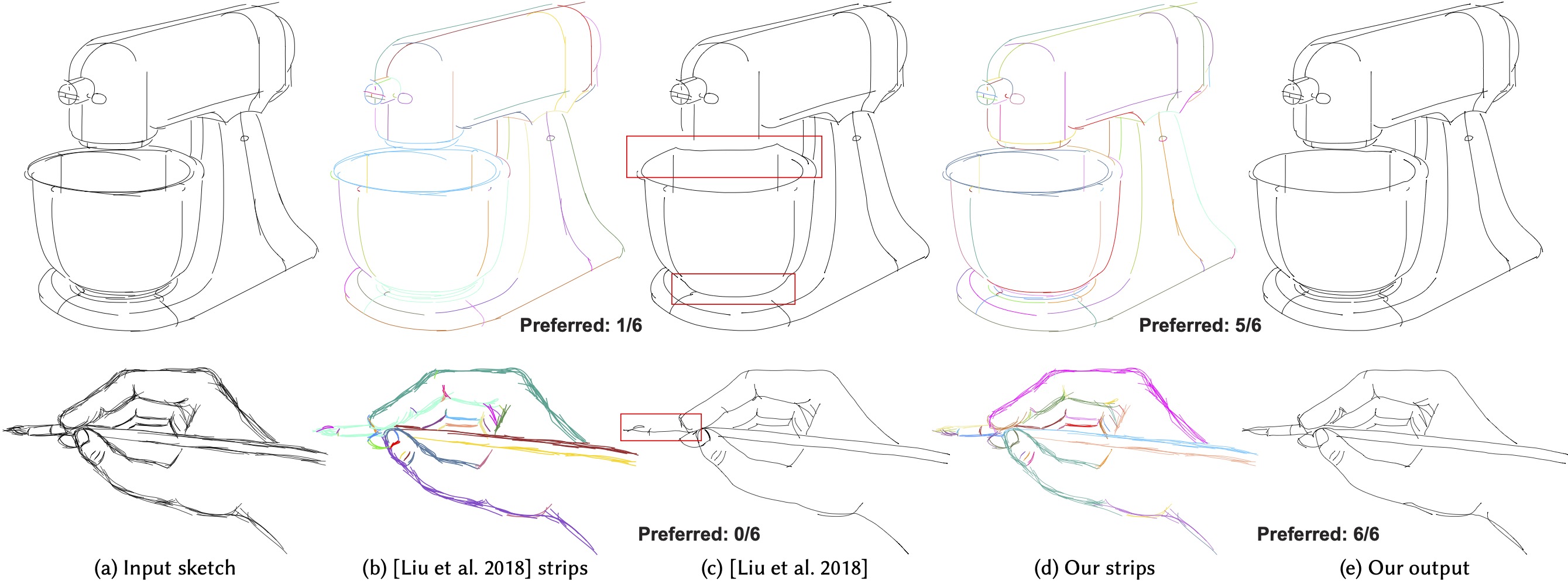StripMaker: Perception-driven Learned Vector Sketch Consolidation
- 1 University of British Columbia
- 2 University of Tokyo
- 3 Université de Montréal

Given a vector sketch with multiple overdrawn strokes (a) StripMaker automatically consolidates it (f) replacing each detected viewer perceived strip of strokes (e, each strip in different color) with the corresponding intended curve. StripMaker outputs (e) are better aligned with user expectations than those produced by state-of-the-art algorithmic alternatives (b,c,d). Inset in (d) shows [Liu et al. 2018] strips. Frames point to artifacts in outputs of previous methods. Input image © jwalsh under CC-BY-2.0.




